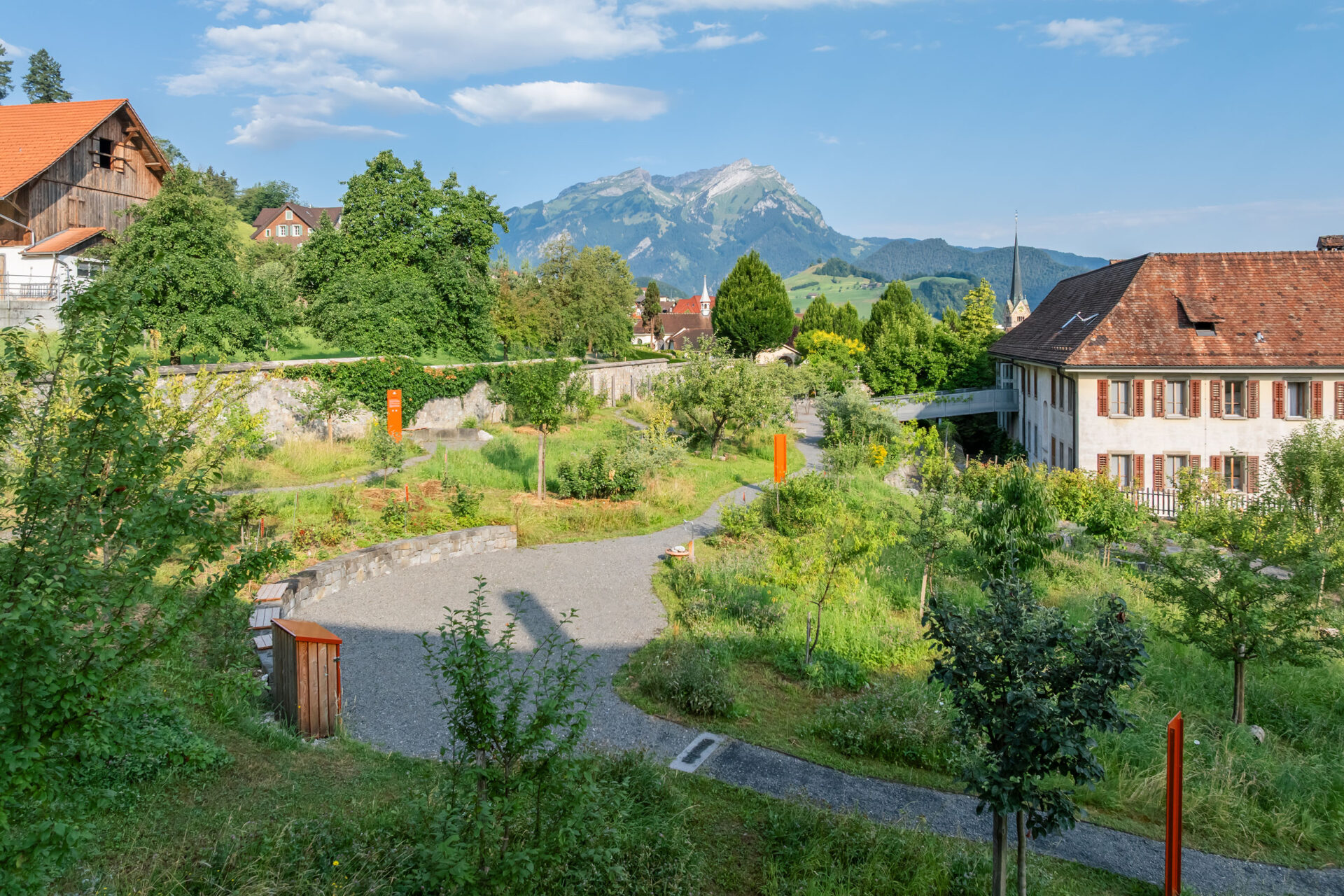The garden of the former Capuchin monastery in Stans was designed and maintained by the friars until they left the monastery in 2004. In the years that followed, the garden was not maintained or was even largely cleared.
Since 2020, the KEDA Foundation has also maintained and cared for the former monastery garden. In cooperation with various partners, work has begun in recent years to create an edible landscape and breathe life back into the garden. Over 200 fruit trees and berry bushes have already found a new home here.
These include old native varieties as well as varieties that are still unknown in our latitudes. The Capuchin friars were wandering monks and brought seeds, fruits and plants from other regions of the world with them centuries ago. Medlar, Chinese date and trifoliate lemon grow alongside mulberries, persimmons and olive trees. Trellises with 30 different varieties of pears are growing along the monastery walls. Supplemented by aromatic herbs, edible alpine plants and wild perennials, the 2,500 square meter garden area regains more biodiversity every year.

The Edible Landscape is a public snack garden. Visitors are invited to taste ripe fruit and berries. These are marked with a “Harvest time” sign. Plants are also essential for biodiversity in the garden for bees, insects and birds. That is why there are also plants that are not edible for humans. Therefore: only taste familiar plants or where there is a “Erntezeit” (harvest time) sign.

Discover the edible landscape
Get to know the plants on a guided tour – or deepen your knowledge in one of our exciting courses.

Our Partners
Sigi Tatschl: www.sigi-tatschl.at
FRUCTUS: www.fructus.ch
ProSpecieRara: www.prospecierara.ch
